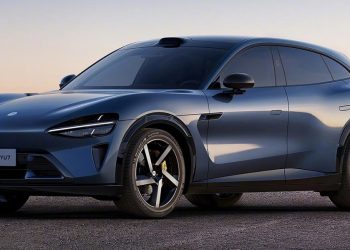The Volkswagen Unified EV Battery marks a turning point in the automaker’s electrification strategy. Revealed at IAA Munich 2025, this standardized battery cell is designed to cut costs, boost efficiency, and power up to 80% of VW Group’s electric vehicles by 2030.
Development of the Unified Cell
The unified prismatic cell, developed by VW subsidiary PowerCo, is at the heart of the company’s new cell-to-pack system. The rectangular form factor allows the cell to adapt to multiple chemistries, including nickel manganese cobalt (NMC), lithium iron phosphate (LFP), sodium-ion, and eventually solid-state. By standardizing the core component, Volkswagen aims to achieve economies of scale that rival Tesla’s cost advantage.
Thomas Schmall, Volkswagen board member for technology, emphasized: “This brings us back to the driver’s seat in one of the key technologies of our industry.”
Production Timeline and Global Expansion
Series production of the Volkswagen Unified EV Battery will begin within weeks at PowerCo’s Salzgitter plant in Germany, ramping up through 2026. Additional factories in Spain and Canada will follow in 2027. By 2030, VW expects the unified cell to appear in Volkswagens, Škodas, Porsches, and Audis across Europe, the U.S., and China. Notably, Porsche abandoned its own in-house battery project in favor of VW’s new cell strategy.
The first applications will appear in VW’s affordable Electric Urban Car Family, with models priced from €25,000 ($29,000). Vehicles like the Volkswagen ID. Polo and Cupra Raval will benefit from ranges of up to 279 miles (450 km).
Technical Advantages of the Unified Design
The prismatic cell achieves a volumetric energy density of 660 Wh/L, around 10% higher than VW’s previous cells. The cell-to-pack approach eliminates modules, saving weight, reducing costs, and freeing space for more energy storage. This flexibility enables compatibility with both 400-volt and 800-volt vehicle architectures.
Guenther Mendl, a VW battery executive, explained: “The basic idea for us is to standardize wherever possible, and customize wherever necessary.”
Battery Chemistry Roadmap
Volkswagen’s plan starts with NMC chemistry for higher performance EVs, before introducing cheaper and more durable LFP versions in 2027 at its Valencia plant. Sodium-ion cells are also on the roadmap, while solid-state batteries remain a long-term goal. At IAA, VW demonstrated a Ducati motorcycle powered by solid-state cells from QuantumScape, signaling ongoing progress.
Partnerships and Supply Chain
Although VW will lead the effort, it won’t carry the entire manufacturing load. Around 50% of cell production will be handled by partners like CATL, Samsung SDI, LG Energy Solution, and Gotion. The unified cell will also serve stationary storage projects through Elli, VW’s new energy storage division, which plans to launch a 40-megawatt-hour installation by year’s end.
Industry Context
Volkswagen isn’t alone in this shift. Ford, Rivian, and General Motors are also moving toward prismatic cell formats and cell-to-pack designs to lower costs and improve range. VW’s scale and supplier partnerships, however, give it a unique edge in the competitive EV market.
Conclusion
The Volkswagen Unified EV Battery represents more than a technological breakthrough—it’s a strategic foundation for VW’s global electrification roadmap. By cutting costs, adapting to multiple chemistries, and enabling scalable production, Volkswagen positions itself to compete directly with Tesla and counter the growing dominance of Chinese EV makers.











